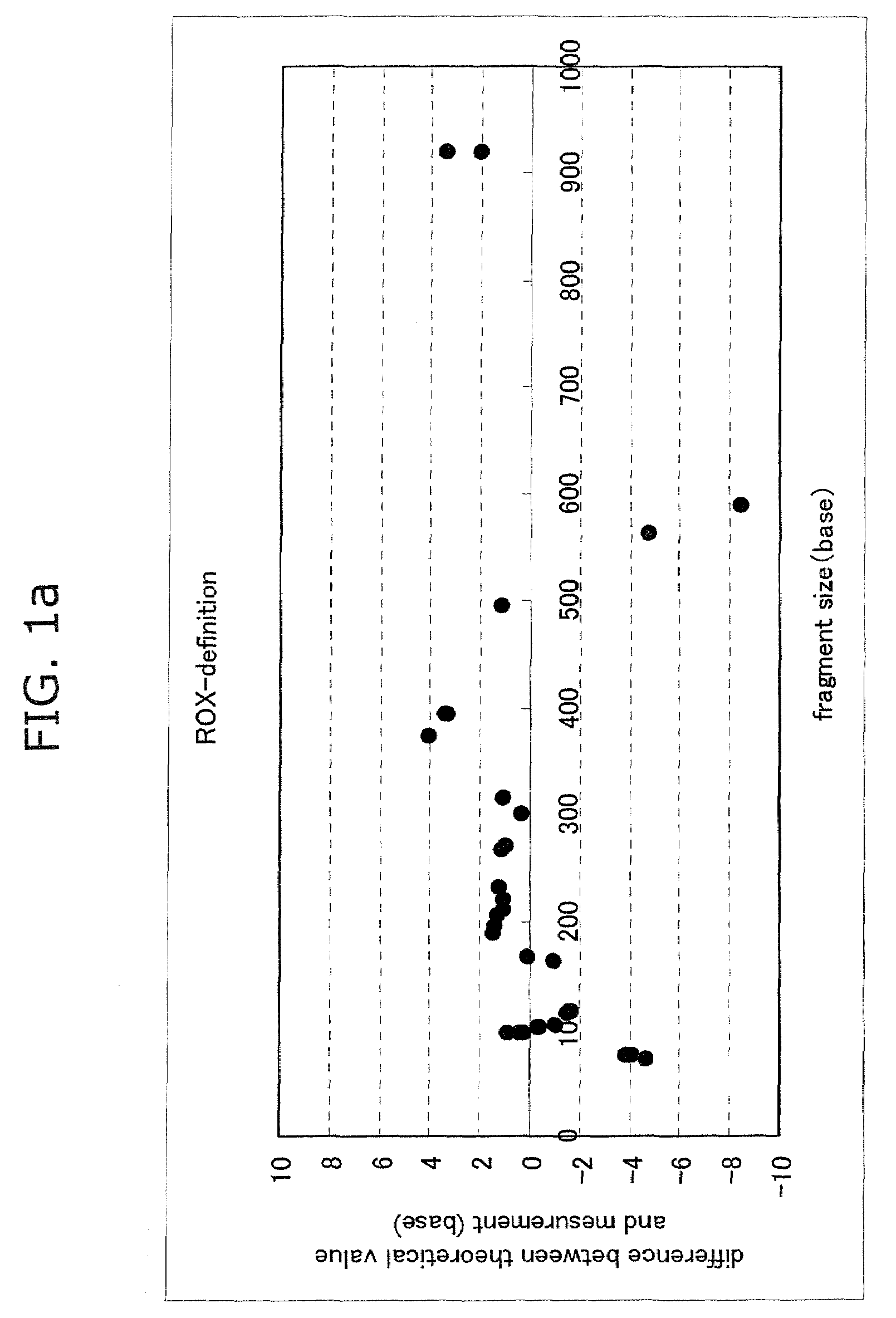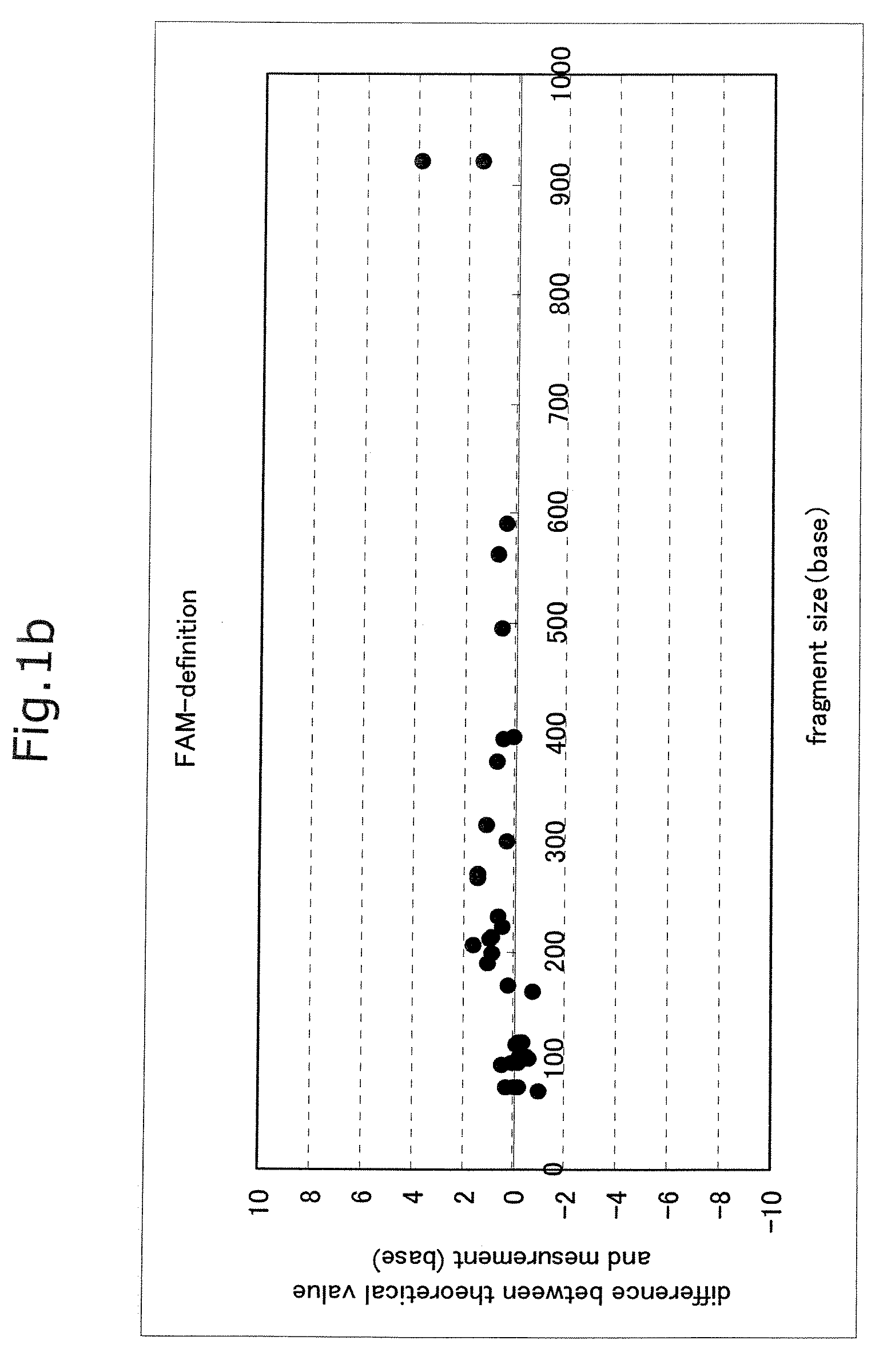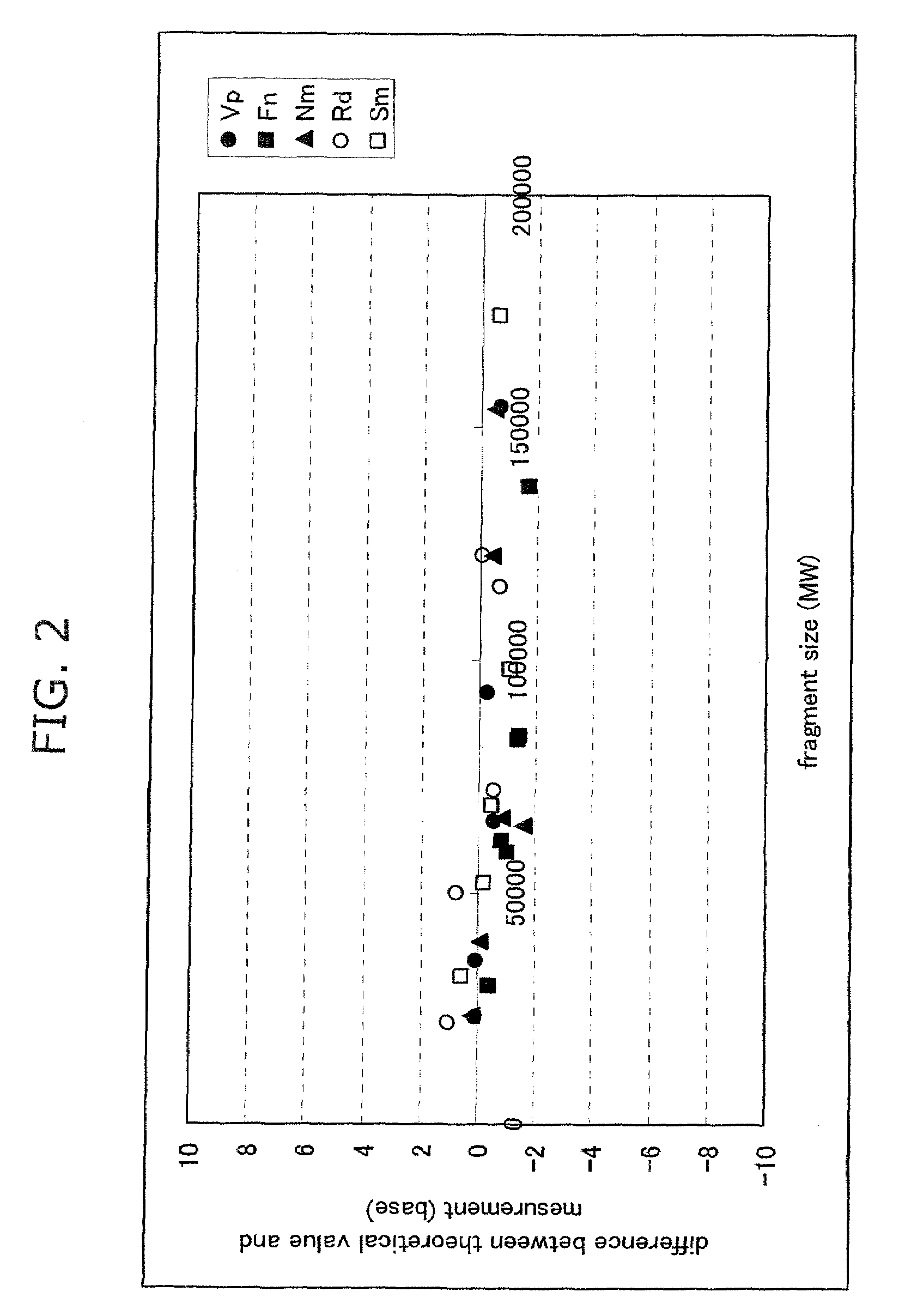Microbial community analysis
a bacterial community and microorganism technology, applied in the field of microorganism community analysis, can solve the problems of difficult to describe the cause of diseases or the like, difficult to assign bacteria, and large cost and effort for conducting analysis using many samples
- Summary
- Abstract
- Description
- Claims
- Application Information
AI Technical Summary
Benefits of technology
Problems solved by technology
Method used
Image
Examples
example 1
Advantage of Use of Size Standard from 16S rRNA Gene Sequence
[0065]Seven bacterial species, Streptococcus mutans (Sm), Veillonella parvula (Vp), Neisseria mucosa (Nm), Fusobacterium nucleatum (Fn), Rothia dentocariosa (Rd), Porphyromonas endodontalis (Pe), and Porphyromonas gingivalis (Pg), were cultured according to a standard method. The centrifugation pellet fractions thereof were subjected to subsequent study. Each bacterial chromosomal DNA was prepared by use of IsoQuick (Orca Research, WA).
[0066]The chromosomal DNA of a Porphyromonas gingivalis W83 strain was prepared by use of IsoQuick. This DNA was used as a template to thereby prepare FAM-labeled size standards. A DNA fragment contained in each standard is shown below.
(i) FAM-Labeled Size Standard (Base Length of Fluorescently Labeled Fragment Contained in Solution)
[0067]1) D88-FAM primer (21 bases)
[0068]2) PCR product derived from D88-FAM and 806R and treated with TaqI (56 bases)
[0069]3) PCR product derived from D88-FAM an...
example 2
Advantage of Combined Use of Size Standard Modification, Determination on Molecular Weight Basis and Dichromatic Method
[0093]Five bacterial species, Streptococcus mutans (Sm), Veillonella parvula (Vp), Neisseria mucosa (Nm), Fusobacterium nucleatum (Fn), and Rothia dentocariosa (Rd), were cultured according to a standard method. The centrifugation pellet fractions thereof were subjected to subsequent study. Each bacterial chromosomal DNA was prepared by use of IsoQuick. Pellets obtained by the centrifugation (15,000 rpm, 15 min., 4° C.) of 0.5 ml of human saliva were used as an oral bacterial fraction. The pellets were suspended in 150 μl of dispersing solution (50 mM Tris-HCl buffer (pH 7.6), 1 mM EDTA, and 1% SDS). After the addition of 0.3 g of zirconia-silica beads (0.1 mm φ, Biospec Products, OK), the mixture was heated (90° C., 10 min.) and homogenized by shaking using a Disruptor Genie cell disrupter (3 min., Scientific Industries, NY). The homogenate solution was centrifuged...
PUM
| Property | Measurement | Unit |
|---|---|---|
| width | aaaaa | aaaaa |
| width | aaaaa | aaaaa |
| width | aaaaa | aaaaa |
Abstract
Description
Claims
Application Information
 Login to View More
Login to View More - R&D
- Intellectual Property
- Life Sciences
- Materials
- Tech Scout
- Unparalleled Data Quality
- Higher Quality Content
- 60% Fewer Hallucinations
Browse by: Latest US Patents, China's latest patents, Technical Efficacy Thesaurus, Application Domain, Technology Topic, Popular Technical Reports.
© 2025 PatSnap. All rights reserved.Legal|Privacy policy|Modern Slavery Act Transparency Statement|Sitemap|About US| Contact US: help@patsnap.com



